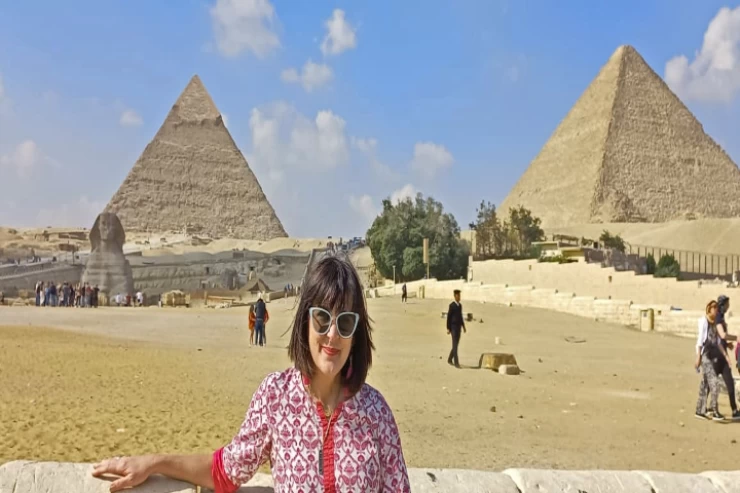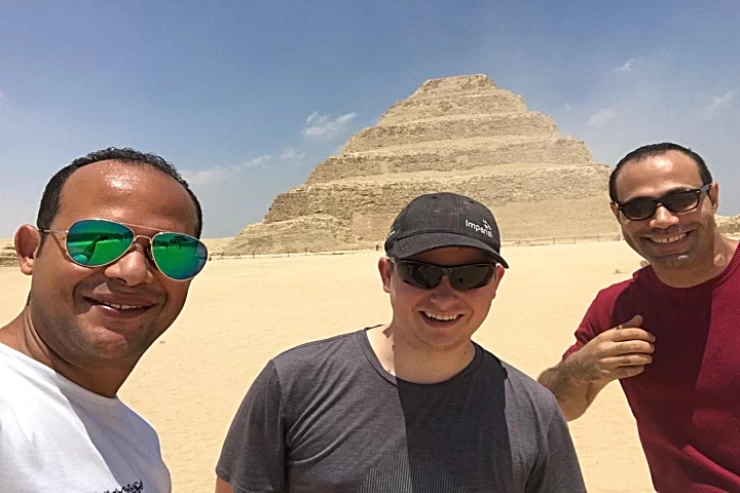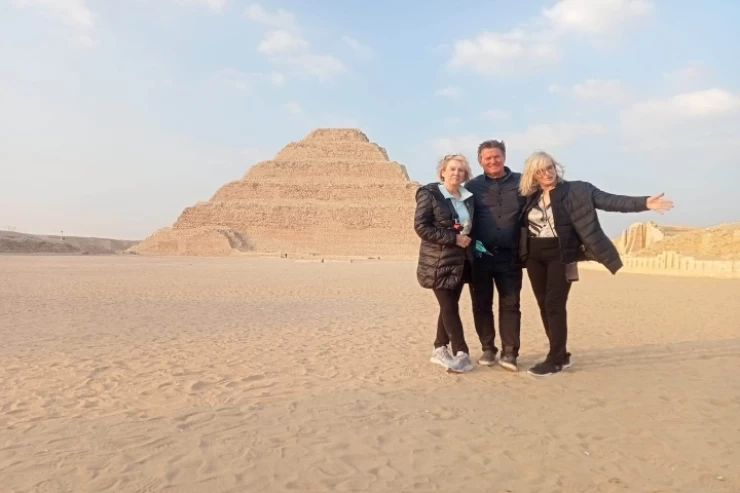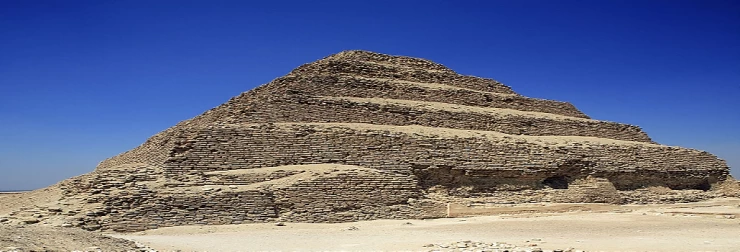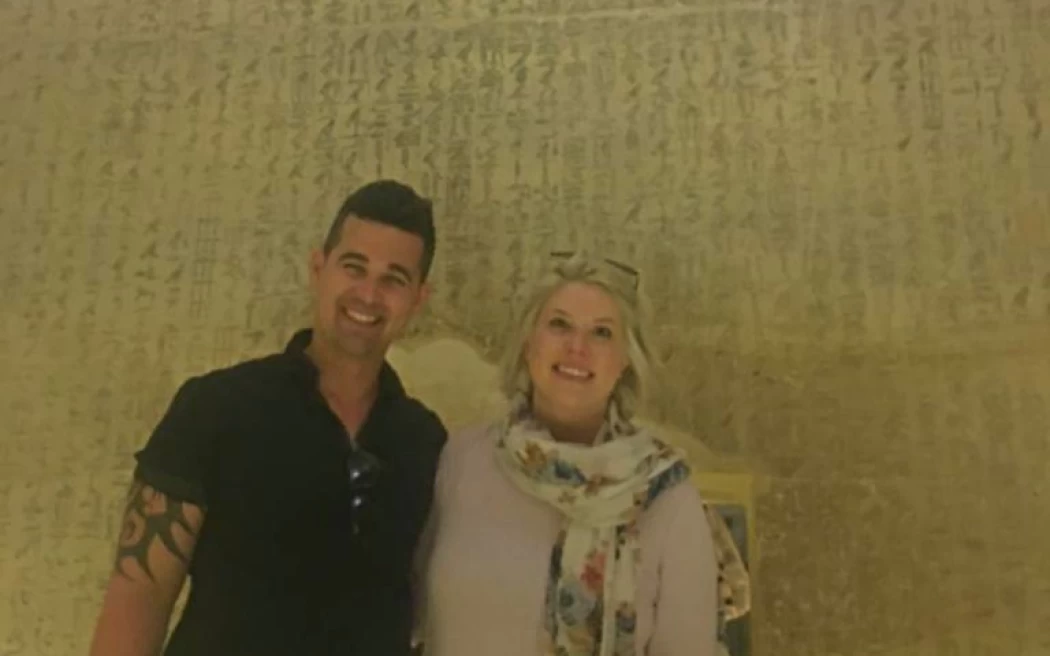
Pyramide von Teti in Saqqara
Pyramide von Teti in Saqqara
Sind Sie vollständig geimpft? Dann müssen Sie bei Ihrer Ankunft am internationalen Flughafen von Kairo keinen PCR-Test vorlegen, um einen einmaligen Urlaub im Land der Pharaonen zu genießen.
Die alte ägyptische Zivilisation wird nicht aufhören, uns jedes Mal zu blenden, wenn unsere Augen auf die Strukturen fallen, die sie verlassen haben, und trotz des Ruhms der Pyramiden von Gizeh, insbesondere des von König Cheops erbauten "großen Pyramiden" und der Größe der Architektur, gibt es viele andere Riesen Pyramiden, die im alten Ägypten gebaut wurden, hatten vielleicht nicht das Glück, so berühmt zu sein wie die in Gizeh. Aber sie faszinieren immer noch jeden, der sie sieht, und er wird von der Größe ihrer Erbauer und ihrer Inschrift und Details wie der Teti-Pyramide in Saqqara beeindruckt sein.
Die Pyramide von Teti, dem Gründer der 6. Dynastie (2345-2181 v. Chr.). Seine Pyramide wird regelmäßig während der Kairoer Tagestouren nach Saqqara gesehen und 1853 von Mariette entdeckt. Meistens handelt es sich jedoch um einen Trümmerhaufen, der ständig in Gefahr ist, vom Sand bedeckt zu werden.
Er regierte das alte Ägypten während des alten Königreichs von 2323 bis 2291 v. Seine Frau, Königin Ipwet, ist die Tochter von König Unas, dem letzten König der 5. Dynastie. Die Königin war die Mutter von Tetis Erben, König Pepi I. Historiker glauben, dass sie diejenige ist, die ihm die königliche Macht verlieh. Fast alle großen Gerichtsbeamten von König Wenis blieben während Tetis Regierungszeit an der Macht. Der König wurde aus mysteriösen Gründen von seinen Wachen ermordet.
Teti gewährte Abydos mehr Land und sein Name wurde in Hatnub eingeschrieben. Er baute eine Pyramide in Saqqara, einer der am meisten erforschten archäologischen Stätten in Kairo. es wird von modernen Ägyptern die "Gefängnispyramide" genannt. Der größte Teil seiner Regierungszeit wurde nicht dokumentiert. Ägyptologen entdeckten eine Statue von ihm aus schwarzem und rosa Granit. Die Statue befindet sich im ägyptischen Museum. Tetis Schwiegersohn Mereruka war auch sein Wesir. Die Mastaba von Mereruka befindet sich in Saqqara.
Die Pyramide von Teti ist von einigen der wichtigsten Mastabas von Saqqara umgeben. Die Pyramide selbst hat sich aufgrund menschlicher Eingriffe verschlechtert. Die Grabkammer enthält noch Hieroglypheninschriften, die in senkrechten Säulen eingraviert sind, die die Texte der Pyramiden darstellen, und in der King Titi-Patrone hat er Dutzende Male gezeichnet. Die Texte sind Zaubersprüche, die das ewige Leben des Königs garantieren und ihm helfen, die Mächte der Dunkelheit im Jenseits zu erobern. Leider wurden die Texte in der Grabkammer fast vollständig zerstört, als die Pyramide in den folgenden alten Jahrhunderten als Steinbruch genutzt wurde
Die Unterstruktur der Teti-Pyramide ähnelt der von Unas, sei es etwas größer. Die Wände des absteigenden Durchgangs sind mit Granit bedeckt. Dieser Durchgang öffnet sich in eine kleine Korridorkammer, gefolgt von einem horizontalen Durchgang. Drei Fallgitter sollten den Durchgang blockieren und verhindern, dass Räuber das Begräbnis entweihen.
Erleben Sie den Zauber Ägyptens, wo alles beginnt, mit dem professionellen Team von Cairo Top Tours. Starten Sie jetzt Ihr Abenteuer und erleben Sie den besten Urlaub in Ägypten. Sie finden hier die besten Ägypten-Osterangebote und -Urlaube 2022. Der Frühling in Ägypten ist perfekt und die Atmosphäre ist unsagbar schön. Wir organisieren tolle und unterhaltsame Ägypten Ausflüge wie Kairo Tagestouren. Schauen Sie sich unsere Ausflüge und Reisen mit angemessenen Preisen an, die für alle Arten von Touristen im Jahr 2022 geeignet sind, sowie Ägypten Landausflüge, zusätzlich zu Kairo Tagestouren vom Flughafen und Kairo Zwischenlandung Tour. Sie können das antike Theben erkunden, beginnend mit dem Tal der Könige und dem Westufer von Luxor, sowie den Karnak-Tempel und den Luxor-Tempel. Ägypten Touren erweitern, um den Tempel von Edfu von Gott Horus der Falke, und Kom Ombo Tempel und Abu Simbel zu decken. All dies während Assuan-Tagestouren und Luxor-Tagestouren. Das Rote Meer ist einer der malerischsten Orte, die Sie in Ägypten besuchen können, genießen Sie einige Meeresabenteuer und Wanderaktivitäten wie Hurghada Tagestouren und Sharm El Sheikh Ausflüge. Sichern Sie sich jetzt Ihren Platz in unseren Ägypten-Reisepaketen und Wüstensafari-Trips, um von Kairo aus die Oasen Siwa, Bahriya und Farafra sowie die Oasen Dakhla und Kharga zu bereisen! Wir sehen uns wieder.
In Ägypten gibt es einen besonderen Ort namens Tips About Nile River Attractions. Hier können Kinder etwas über die coolen Dinge in der Nähe des Nils und die Geschichte und Kultur des islamischen Kairo lernen.
Saqqara necropolis houses the Teti pyramid, which is one of the most interesting pyramids in decreasing order of age and significance. This pyramid was built for Pharaoh Teti, the first king of the Sixth Dynasty of ancient Egypt, approximately between 2345 and 2333 B.C. In this manner, this structure is an integral part of Ancient Egypt's elaborate royal tomb architecture. The small Teti Pyramid, which may not be as famous as the Great Pyramids at Giza, to this day remains significant because of the Pyramid Texts found inside the Teti Pyramid walls that show what ancient Egyptians believed about religion.
Like other interesting structures, such as the Step Pyramid of Djoser, the Teti Pyramid is located in the Saqqara area. Being, on the outer surface, a small pyramid able to lie behind the monuments, the Teti pyramid radiates considerable spiritual strength and architectural upheavals, which are very fascinating to people in the history of Egypt. That is why this pyramid is affordable for the tourists.
Pharaoh Teti was the first of the Tenth Dynasty rulers of Egypt who built its pyramids. This period marked the end of the apex of the pyramid building of the Old Kingdom’s Fifth Dynasty at the Western Desert and the onset of widespread political and economic troubles. Even during the reign of Teti, who ascended the throne in the flourishing civilization of Egypt, it was a great and rich country of the first order. However, the signs of conflict within the state’s system, which had previously been quite solid and centralized, began to emerge, laying the groundwork for future conflicts within the power depicted so firmly.
Teti came to power after King Unas, the last king of the Fifth Dynasty, completed his reign. He also respected the traditions of the great eras and the pyramid-building culture.
In about twelve years of power only, despite his short rule, Teti's pyramid at Saqqara with its mortuary complex points to his wish somehow to transcend the mortal realm and continue with the veneration of the primitive deities of Egypt. The pyramid is also of great importance when one considers the religious practices of Egypt during the Old Kingdom, owing to Teti's tomb containing Pyramid Texts, which survive to this day as a part of funerary customs in Egypt.
The Pyramid of Teti was once a large structure with a smooth casing of white limestone that made it glisten under the hot desert sun. However, the outer surface of the pyramid has suffered over the years and is now broken. In contrast, the inner grounds have remained relatively intact, thereby maintaining the inner significance of the essence of the pyramid.
With a height of 52 meters (170 feet) and a base measuring 78.5 meters (258 feet) on each side, the Pyramid of Teti is relatively small when compared to the other great pyramids of Giza. However, the most interesting part of the pyramid remains concealed. Its smooth-sided form was already observed as an architectural gesture that evolved from the previous pyramid constructions of the Old Kingdom. However, innovations were within the structure. Particularly, the sacred images and religious texts that were decorated on the walls of the interior parts of the pyramid were new.
Teti's pyramid, like the other royal pyramids of its time, was also built with a mortuary temple and a connected causeway leading to the Valley temple at the bank of the Nile. The causeway functioned both as a ceremonial track for the departed monarch in his traversal to the world beyond and as a path for priests and congregants during burial services. Most of the structure is in ruins today, but its design has shaped the traditions associated with the construction of pyramids in Egypt.
The Pyramid of Teti displays one exceptional characteristic of importance: her Pyramid Texts on the walls of the burial chambers, which are among the earliest known inscriptions of a religious nature. They record detailed prayers, hymns, and spells that contributed towards enabling the pharaoh to inhabit the other world, and they are the most ancient known religious inscriptions in existence.
The texts served the purpose of shielding and assisting the soul of the king in such a way that he is ensured of resurrection and eternal presence with the gods. They contain ways in which the king could rise to the heavens, mention of Ra the sun god, and Osiris the god of the underworld, and prayers to other gods for safety. These religious writings can be considered precursors to the more elaborate, long-written funerary inscriptions that came later on, such as the Coffin Texts and the Book of the Dead during the Middle Kingdom and the New Kingdom.
These writings are of great importance even for present-day archaeologists and historians as they illustrate the religious tenets of ancient people like the Egyptians. The Pyramid Texts in Teti's pyramid are more or less the same as those in the pyramid of his predecessor Unas, suggesting a consistency in the burial practices throughout the dynasties.
The Interior Chambers: A Sacred Journey
Visitors to the Pyramid of Teti can plunge within the structure's interior and see the chambers that housed the urn of the long-dead pharaoh. First, however, visitors must crawl through a dark, narrow, sloping passage that leads to several rooms built to keep the king’s corpse safe and to the spirit’s way to the other world.
What first meets the eye of the visitors who enter the burial chamber is a large stone sarcophagus, which is believed to have contained the body of Teti and which has been placed in the center of the chamber. Even though the design of the sarcophagus is more or less plain, its massive scale and location in the room indicate the importance of the pharaoh’s final resting place.
The Pyramid Texts, which consist of hieroglyphs that are grossly incised on the limestone walls encasing the tomb, line the sides of the burial cell. They are clear poetic and devotional stories that reflect the ancient concepts of the Egyptians and their faith in immortality.
Saqqara Necropolis: Teti’s Pyramid in the Land of the Dead
Тети’s Pyramid is situated in the expansive necropolis of the Saqqara, which was used as a burial ground for thousands of years for the rulers and elites of ancient Egypt. This ancient cemetery in Saqqara is best known for the Step Pyramid of King Djoser, the first man-made monumental structure in the world constructed solely of stone. However, it is far from its only wonder, for it holds countless tombs and pyramids, which show how the ancient Egyptians’ methods of burying their dead progressed throughout the years.
Tombs of the high officials and nobles who served Pharaoh Teti can also be found near the Teti Pyramid for all visitors to experience. The Tomb of Mereruka is one of the most famous and is a beautifully adorned tomb of one of Teti’s viziers. Mereruka’s tomb includes many reliefs showing aspects of daily, rustic, and ritual life that help understand the Old Kingdom in Egypt.
The Saqqara necropolis continues to be a major site for archaeological discovery, with new tombs and artifacts uncovered regularly, shedding light on Egypt’s ancient past.







